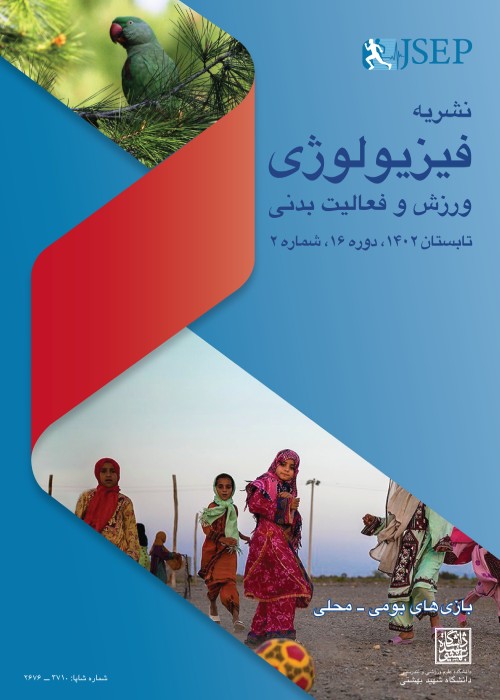Comparison of the effect of different methods of aerobic exercise on the treadmill on the expression of angiogenesis genes in adipose tissue of rats
The expansion of fat tissue depends on its angiogenesis rate, and exercise activities affect various angiogenic factors in this tissue. With the expansion of fat tissue and adipogenesis, a dense and closed capillary network is formed in this tissue, which can suppress angiogenic factors. If there is a wide capillary network and angiogenic factors such as VEGF-A in this tissue, the expansion of fat tissue can be prevented. The aim of this study was to investigate and compare the effect of a variety of endurance exercises on the expression of angiogenic genes vascular endothelial growth factor (VEGF-A) and thrombospondin-1 (TSP-1) in the subcutaneous fat tissue of rats.
In this experimental study, 32 male Wistar rats aged eight weeks and weighing 237 ± 33 grams were randomly divided into four equal groups of control, high-intensity progressive continuous aerobic training (HIT), moderate-intensity continuous aerobic training (MIT) and, high-intensity interval aerobic training (HIIT). The treadmill training protocols consisted of eight weeks, so that the HIT training consisted of running at a speed of 20 m/min or at an intensity of 65% of the maximum oxygen consumption (VO2max), with a gradually increasing slope for 30 minutes. MIT training consisted of running with an intensity of 65% VO2max for 37 minutes, and HIIT training consisted of four high-intensity intervals with four minutes of running with an intensity of 90-100% VO2max and four low-intensity intervals with a duration of three minutes with 50-60% VO2max (28 minutes in total). Finally, 48 hours after the last training session, the subcutaneous fat tissue was isolated and the expression of VEGF-A and TSP-1 genes in the subcutaneous fat tissue was measured by RT-qPCR method. The resulting data were analyzed using a one-way analysis of variance and Tukey's post hoc test, and the significance level was considered P ≤ 0.05.
The findings of the present study showed that all three exercise interventions significantly increased the expression of the VEGF-A gene in subcutaneous fat tissue; But only HIT training could significantly reduce the expression of TSP-1 in this tissue (P ˂ 0.05). Also, the increase in VEGF-A expression was significantly higher after HIT training compared to HIIT (P ˂ 0.05).
According to the findings of this study, high-intensity and progressive continuous aerobic training is probably the most desirable training method to increase angiogenesis in subcutaneous fat tissue. These types of exercises can be effective in reducing fat mass by improving blood supply to fat tissue.
- حق عضویت دریافتی صرف حمایت از نشریات عضو و نگهداری، تکمیل و توسعه مگیران میشود.
- پرداخت حق اشتراک و دانلود مقالات اجازه بازنشر آن در سایر رسانههای چاپی و دیجیتال را به کاربر نمیدهد.


